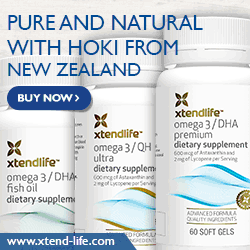How to Avoid Getting Spammed
And no…I don’t mean the stuff that ends up in your (and my) inbox…
Food prices are rising, and as a result, SPAM® sales are booming.
Sales of Spam — that much maligned meat — are rising as consumers are turning more to lunch meats and other lower-cost foods to extend their already stretched food budgets.
What was once cheeky, silly and the subject of a musical (as Monty Python mocked the meat in a can), is now back on the table as people turn to the once-snubbed meat as costs rise, analysts say.
…Quan just bought a couple more cans of Spam on sale and some ramen, the instant noodle dish long a staple on college campuses. Her food and gas budgets are together, so she’s had to cut back on food spending while the cost of gas increases. Her favorite Spam meal? Spam and macaroni and cheese. She doesn’t skimp on nutrition, though. Quan serves her husband and three children — ranging in age from 4 to 11 — organic vegetables like salads, broccoli and carrots.
“It balances out,” she said.
It balances out? Really?
Nearly 80% of the calories in a 2 oz. serving of SPAM® come from fat. One serving of “classic” Spam also contains a whopping 767 mg of sodium – 1/3 of the upper limit recommended by the American Heart Association. Even Spam Lite isn’t much of an improvement: 65% of the calories come from fat, and a serving still supplies 568 mg of sodium (1/4 of the AHA upper limit).
Spam is a pretty poor source of protein, too. For approximately the same number of calories in a serving of classic Spam, you could eat 3 oz. of chicken drumsticks (roasted) – which are mega-cheap (my local Albertson’s has them on sale this week for 77 cents a pound). Yet the drumsticks would give you 24 g protein vs. Spam’s 7g; and would “cost” you only 9 g fat vs. Spam’s 15 g.
So why would anyone bother with Spam at all?
It comes down to the convenience. All you have to do is pop the lid, slice, heat for a few seconds, and serve – like this:
[youtube:http://www.youtube.com/watch?v=gLRPJEoQBQQ]
The chicken, on the other hand, has to be thoroughly cooked…and that’s the real problem, isn’t it? In our overworked, fast-paced world, convenience trumps nutrition. What most people don’t realize, however, is that they pay extra for that convenience…even for a “budget” food product like Spam.
Need proof? Just run the numbers.
According to the linked article, an average 12 oz. can of SPAM costs approx. $2.62 – which works out to $3.49 per pound. That’s no bargain compared to the $0.77 per pound drumsticks mentioned above. Even more expensive cuts, like chicken breasts, can cost less. To return to my local Albertson’s for a moment, Foster Farm split chicken breasts are on sale this week for $2.49 per pound. And for my money, I’d get 91 g protein per pound of the chicken (raw, bone and skin included) vs. only 64 g for a pound of Spam.
So breasts or drumsticks, the chicken is the better deal by far. Nor is chicken the only low cost alternative. I can find a lot of fresh/frozen meat for under $3.49/pound. For example, this week’s sales include London Broil ($1.99/lb), a 3 lb. bag of “Jennie-O turkey burgers ($5.99), and boneless pork sirloin roast/chops ($2.99/lb.). There’s even stuff not on sale that’s a better value too – such as whole frozen turkeys/turkey breasts.
Aren’t the savings AND the nutrition worth a little more effort?
And a little more effort is really all it takes, too…the trick is to do some advance planning and cooking in bulk. Cooking the chicken for dinner? Buy and cook extra, and refrigerate/freeze the leftovers for subsequent meals. Do the same with other meats: buy larger cuts such as roasts or “family packs” and pre-cook, so the meat is ready to use for quick meals/snacks. In addition, the use of nutritious, inexpensive “extenders” – such as dried whole grains and legumes – will stretch your food dollars even further. These can be also be prepared in advance and refrigerated/frozen and/or used to make crockpot soups/stews/chili and other recipes.
Need more tips? They’re easy to find, like here, here and here.
Times are getting tougher, there’s no doubt about that. But your food dollars will go farther if they’re spent on real food, rather than fatty, salty, processed, convenience food substitutes. Spam is a joke…and it should stay that way.
[youtube:http://www.youtube.com/watch?v=anwy2MPT5RE]




May 29, 2008
Yuck, just the thought of living off of spam as a staple. Makes me wonder what Quan was buying before she went to Spam for protein?
If she was already buying and preparing chicken and other meats as you mention, Spam wouldn’t even be considered as an option to her.
Slow cookers and crock pots also make those less expensive cuts of meat an easy and nutritious answer to the rising costs of living, at least giving us the chance to trim off the excess fat and amount of sodium before it goes into us.
Good article!
May 29, 2008
Spam, spam, spam, spam… I DON’T LIKE SPAM! lol